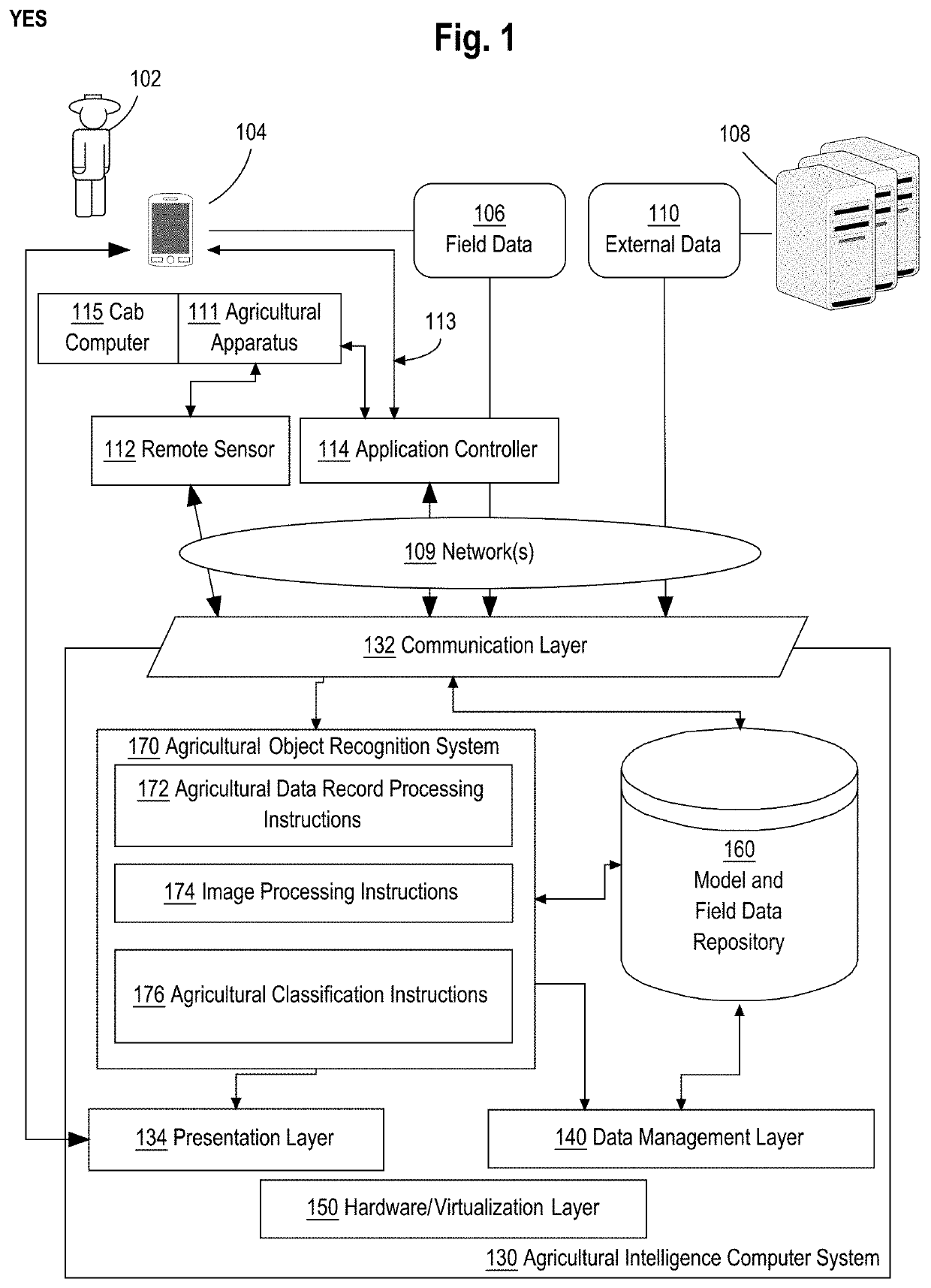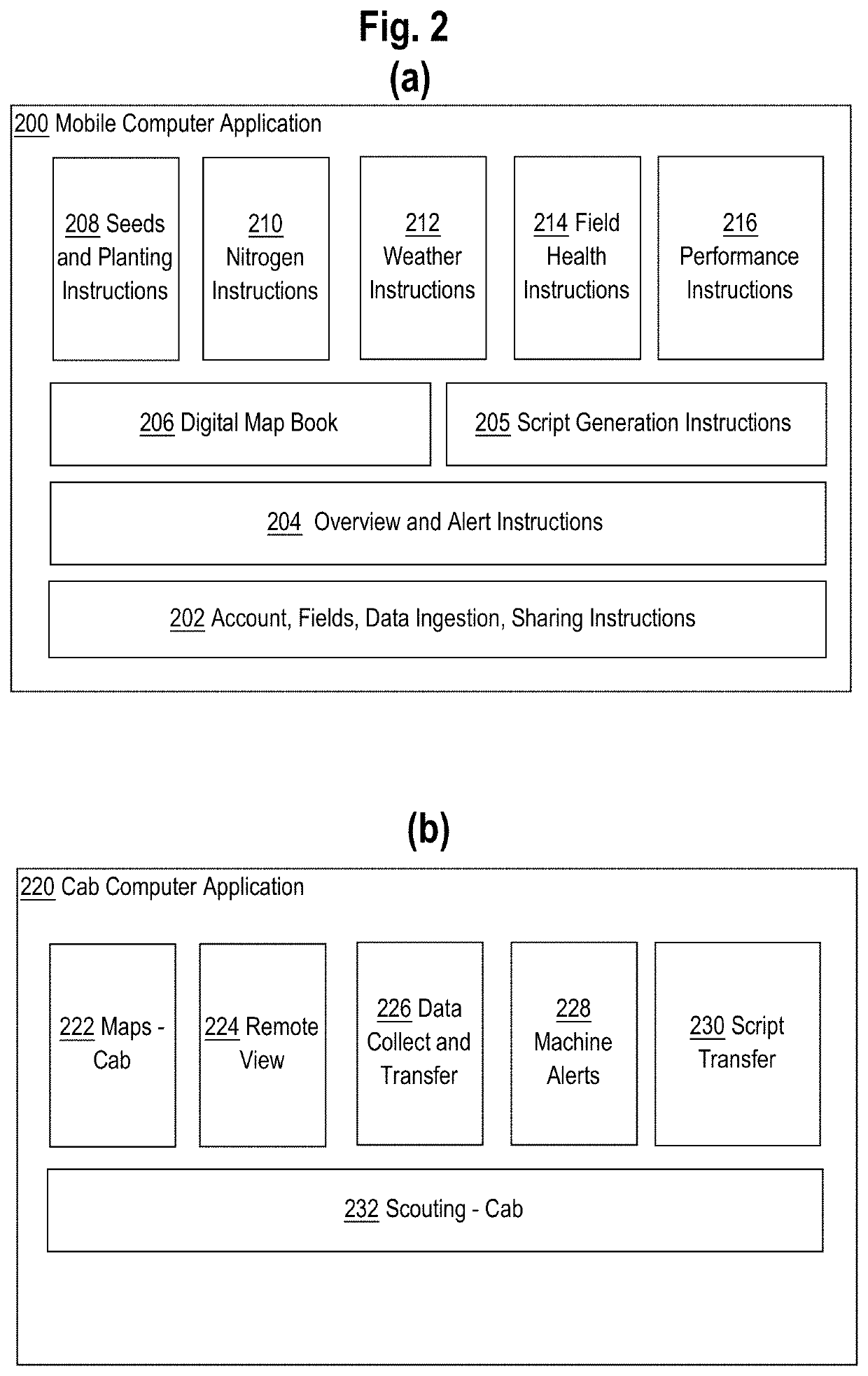Hybrid vision system for crop land navigation
- Summary
- Abstract
- Description
- Claims
- Application Information
AI Technical Summary
Benefits of technology
Problems solved by technology
Method used
Image
Examples
Embodiment Construction
[0020]In the following description, for the purposes of explanation, numerous specific details are set forth in order to provide a thorough understanding of the present disclosure. It will be apparent, however, that embodiments may be practiced without these specific details. In other instances, well-known structures and devices are shown in block diagram form in order to avoid unnecessarily obscuring the present disclosure. The description is provided according to the following outline:
[0021]1.0 General Overview
[0022]2.0 Example Agricultural Intelligence Computer System[0023]2.1 Structural Overview[0024]2.2 Application Program Overview[0025]2.3 Data Ingest to the Computer System[0026]2.4 Process Overview—Agronomic Model Training[0027]2.5 Implementation Example—Hardware Overview
[0028]3.0 Example Autonomous Agricultural Classification System[0029]3.1 Accurate Classification Detection[0030]3.2 Automated Mobile Agricultural Product Feature Classification[0031]3.3 Autonomous Mobile Agri...
PUM
 Login to View More
Login to View More Abstract
Description
Claims
Application Information
 Login to View More
Login to View More - R&D
- Intellectual Property
- Life Sciences
- Materials
- Tech Scout
- Unparalleled Data Quality
- Higher Quality Content
- 60% Fewer Hallucinations
Browse by: Latest US Patents, China's latest patents, Technical Efficacy Thesaurus, Application Domain, Technology Topic, Popular Technical Reports.
© 2025 PatSnap. All rights reserved.Legal|Privacy policy|Modern Slavery Act Transparency Statement|Sitemap|About US| Contact US: help@patsnap.com



